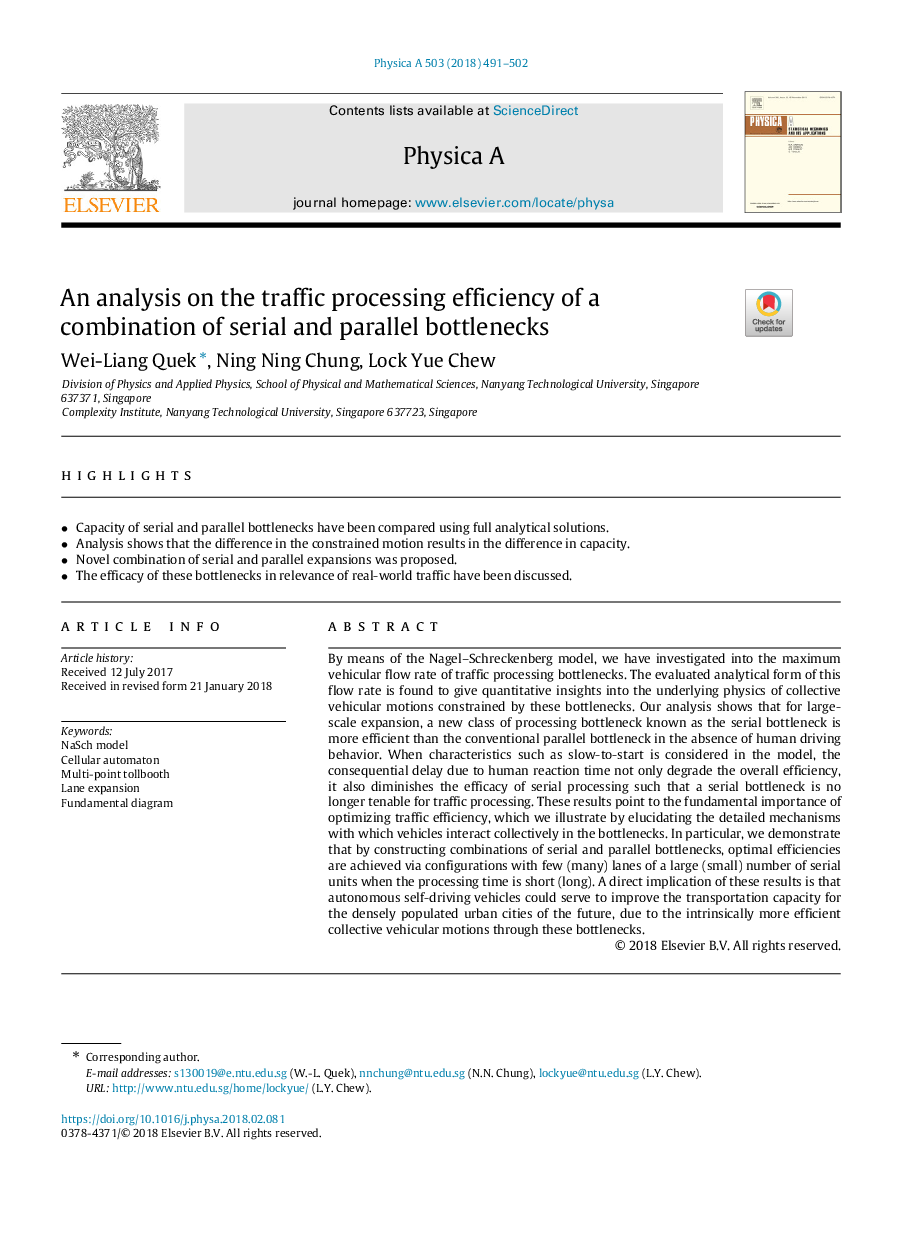| Article ID | Journal | Published Year | Pages | File Type |
|---|---|---|---|---|
| 7375444 | Physica A: Statistical Mechanics and its Applications | 2018 | 12 Pages |
Abstract
By means of the Nagel-Schreckenberg model, we have investigated into the maximum vehicular flow rate of traffic processing bottlenecks. The evaluated analytical form of this flow rate is found to give quantitative insights into the underlying physics of collective vehicular motions constrained by these bottlenecks. Our analysis shows that for large-scale expansion, a new class of processing bottleneck known as the serial bottleneck is more efficient than the conventional parallel bottleneck in the absence of human driving behavior. When characteristics such as slow-to-start is considered in the model, the consequential delay due to human reaction time not only degrade the overall efficiency, it also diminishes the efficacy of serial processing such that a serial bottleneck is no longer tenable for traffic processing. These results point to the fundamental importance of optimizing traffic efficiency, which we illustrate by elucidating the detailed mechanisms with which vehicles interact collectively in the bottlenecks. In particular, we demonstrate that by constructing combinations of serial and parallel bottlenecks, optimal efficiencies are achieved via configurations with few (many) lanes of a large (small) number of serial units when the processing time is short (long). A direct implication of these results is that autonomous self-driving vehicles could serve to improve the transportation capacity for the densely populated urban cities of the future, due to the intrinsically more efficient collective vehicular motions through these bottlenecks.
Related Topics
Physical Sciences and Engineering
Mathematics
Mathematical Physics
Authors
Wei-Liang Quek, Ning Ning Chung, Lock Yue Chew,
